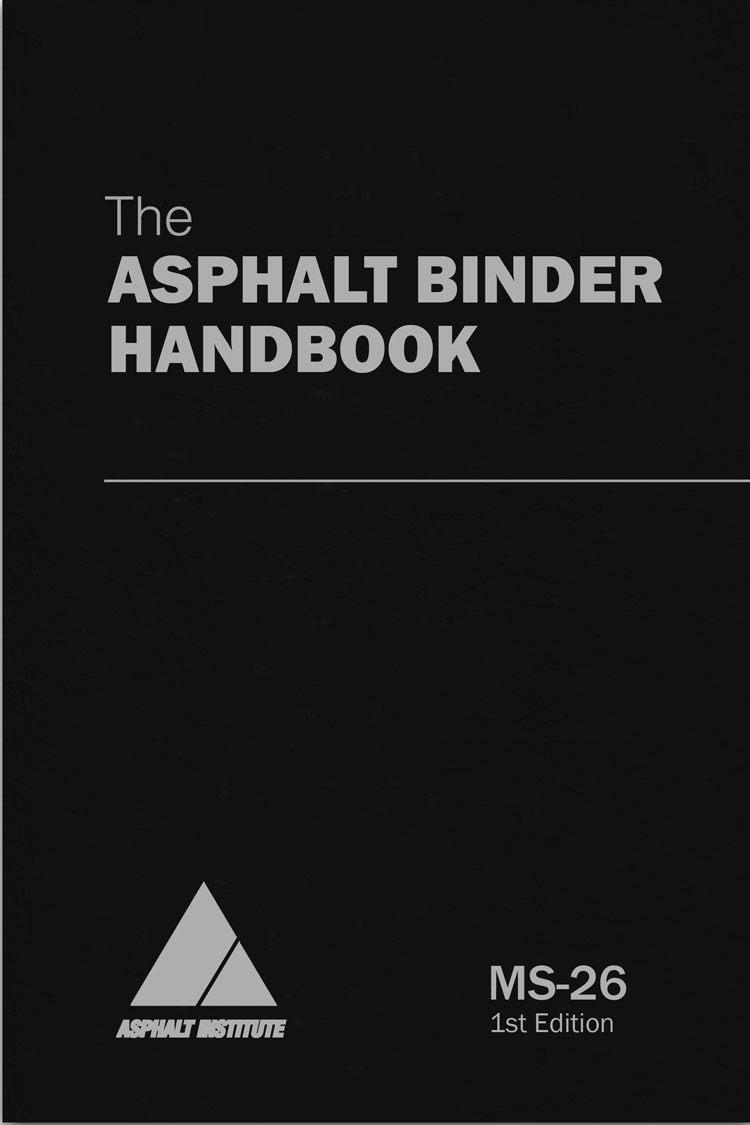 A review of the Asphalt Institute’s new comprehensive manual devoted entirely to information about asphalt binders and bitumen.
A review of the Asphalt Institute’s new comprehensive manual devoted entirely to information about asphalt binders and bitumen.
My wife has been married to an engineer for over 15 years. In that time, she has become somewhat accustomed to my engineering habits. One of the habits that she will never quite understand is my casual reading of technical manuals.
So, when I plopped down on the couch and cracked open my new copy of “MS-26, The Asphalt Binder Handbook”, I was given a slight eye-roll over the top of her copy of “The Hunger Games.” I proudly informed her that this was not just any book, but a first edition signed by the author, Asphalt Institute’s own Mike Anderson. She did not seem as excited as I was. Despite her apparent disapproval of my leisure time reading material, I read on.
Two key characteristics of MS-26 become apparent upon initial reading. The first being the fact that the text is organized in a well thought out manner. The first chapter begins by answering the question “What is Asphalt?” MS-26 progresses through more detailed topics such as “Asphalt Chemistry” and “Asphalt Physical Properties and Characteristics” in chapters two and three. The second important characteristic of MS-26 is that it is not written in a heavily technical academic style but rather reads very easily. This organization and writing style make the text easily accessible to those who may have little familiarity with liquid asphalt. MS-26 does not read like an ASTM manual.
Though MS-26 is easily read, it does not lack appropriate technical detail. Chapter four covers, in all necessary detail, the methods used for testing and grading asphalts. The synopsis of each test gives the reader a good understanding of why and how each binder test is performed. This section is equally well organized, starting out with older binder tests such as “penetration” and “viscosity” and progressing through more modern performance grading tests such as DSR and BBR testing. Presenting the tests in this order allows the reader to get a feel for how binder testing has evolved over the last century. The description of each test also stands on its own, allowing the text to be used as a “quick reference” guide for those requiring a description of why and how a particular test is run.
Chapters five, six and seven cover emulsions and cutbacks, air-blown asphalts and modified asphalts. Product histories, uses, production and testing methods are outlined in the same appropriate but not overly technical detail. The book also includes a section on the safe handling of liquid asphalt.
MS-26 can be read from cover to cover or used as a quick reference guide. For those of us that are familiar with the liquid asphalt industry, but not in the liquid lab every day, it is an excellent and concise point of reference for all things binder related. Because of the way it is written and organized, it is also a great source to help those with a limited understanding of our industry gain critical knowledge.
It definitely has a place on my bookshelf. If you haven’t purchased a copy, you should – I’ll bet Mike Anderson will still sign it if you ask.
Moss is a Supply Representative at Colas, Inc. in Cincinnati, Ohio.














